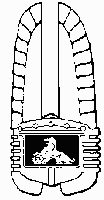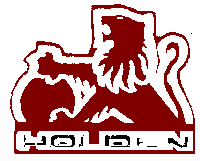
THE HOLDEN LION
Scattered throughout this page you will find reproductions of the Holden Lion in some of the forms it has taken through the years. These are not in any order, nor is the selection complete, but they do show the evolution of the symbol of the Great Australian Car.
|
|
|
|
The first Holden emblem was a life-size wooden horse which stood above the entrance of the Holden & Frost Saddlery works. As an emblem, the Holden lion relates to the time when the general practice of coach builders was to have their name or trademark engraved on the doorsill or on a large plate fastened to the instrument panel .

In the USA, Fisher Body had a neat, embossed replica of it's coach trademark attached to the lower part of the cowl. At this time, Holden's Motor Body Builders were using a large engraved brass plate, the foreground of which was a figure representing industry, with a background of factory buildings.
|
|
|
|
This design was too detailed for embossing on a small plate such as Fisher was using. A new emblem was needed.

A Wembley Lion medallion was chosen, depicting an Egyptian lion, the symbol of the Wembley Exhibition which was held in London in 1924. According to Fable, the principle of the wheel was suggested to primitive man when observing a lion rolling a stone. A number of sketches were made and it was decided to go ahead with the design.
|
|
|
|
George Rayner Hoff, one of Australia's leading sculptors, was commissioned to develop the design in the solid. From a plaster model, small metal replicas were produced for the nameplates. These were attached to all bodies built from 1928 to 1939 on the lower near side cowl in a similar manner to Fisher.

The design was adopted as a trademark in all GMHA advertising. The Holden Lion also became the emblem for the first Australian car, the Holden.
|
|
|
|